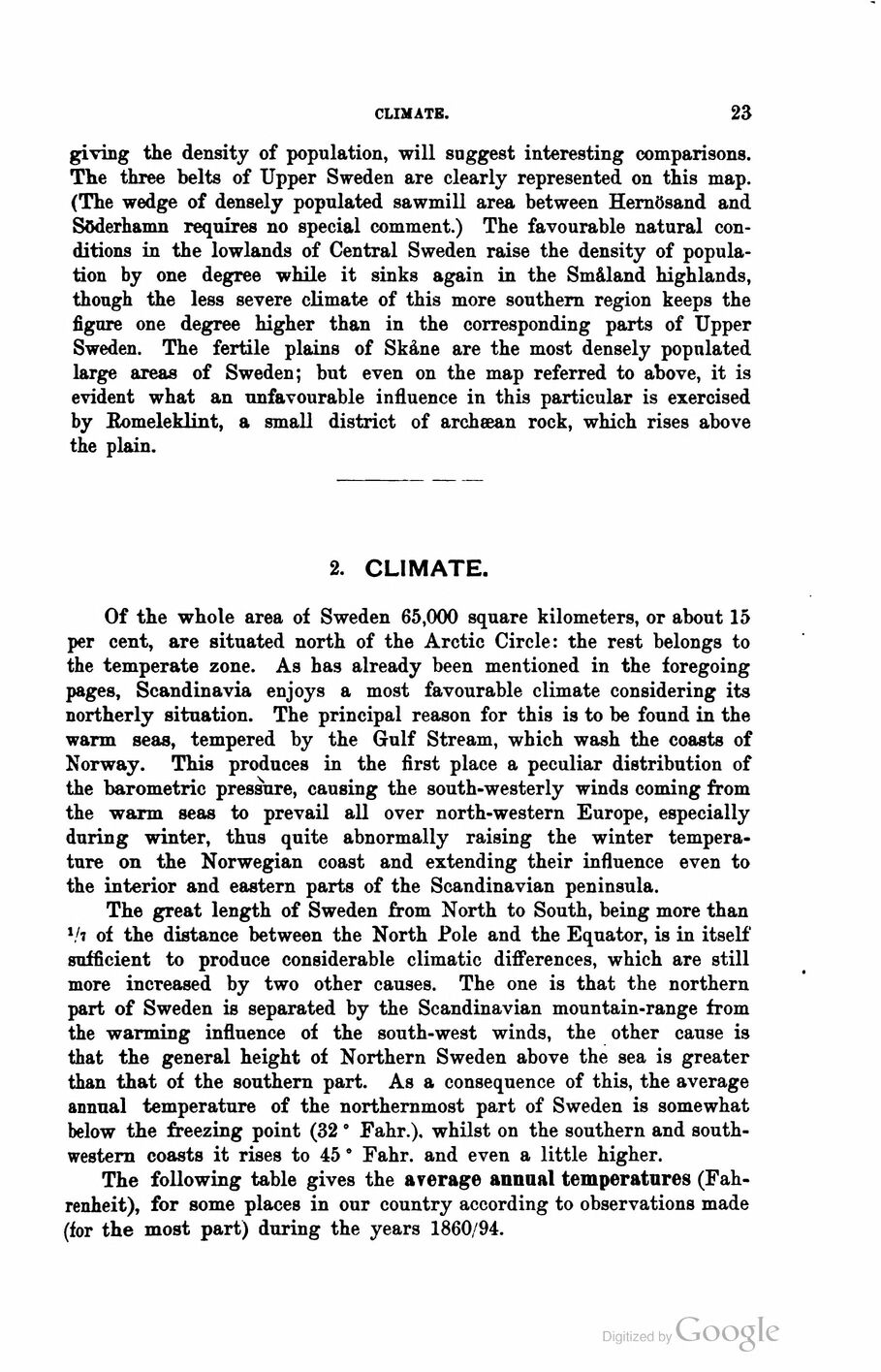
Full resolution (JPEG) - On this page / på denna sida - First part - I. Physical Geography - 1. Configuration and Water-system. By Docent Gunnar Andersson, Ph. D., Stockholm - D) The Plains of Skåne - 2. Climate. By N. Ekholm, Ph. D., Central Meteorological Office, Stockholm

<< prev. page << föreg. sida << >> nästa sida >> next page >>
Below is the raw OCR text
from the above scanned image.
Do you see an error? Proofread the page now!
Här nedan syns maskintolkade texten från faksimilbilden ovan.
Ser du något fel? Korrekturläs sidan nu!
This page has never been proofread. / Denna sida har aldrig korrekturlästs.
climate.
23
giving the density of population, will suggest interesting comparisons.
The three belts of Upper Sweden are clearly represented on this map.
(The wedge of densely populated sawmill area between Hernösand and
Söderhamn requires no special comment.) The favourable natural
conditions in the lowlands of Central Sweden raise the density of
population by one degree while it sinks again in the Småland highlands,
though the less severe climate of this more southern region keeps the
figure one degree higher than in the corresponding parts of Upper
Sweden. The fertile plains of Skåne are the most densely popnlated
large areas of Sweden; but even on the map referred to above, it is
evident what an unfavourable influence in this particular is exercised
by Romeleklint, a small district of archæan röck, which rises above
the plain.
2. CLIMATE.
Of the whole area of Sweden 65,000 square kilometers, or about 15
per cent, are situated north of the Arctic Circle: the rest belongs to
the temperate zone. As has already been mentioned in the foregoing
pages, Scandinavia enjoys a most favourable climate considering its
northerly situation. The principal reason for this is to be found in the
warm seas, tempered by the Gulf Stream, which wash the coasts of
Norway. This produces in the first place a peculiar distribution of
the barometric pressure, causing the south-westerly winds coming from
the warm seas to prevail all over north-western Europe, especially
during winter, thus quite abnormally raising the winter
temperature on the Norwegian coast and extending their influence even to
the interior and eastern parts of the Scandinavian peninsula.
The great length of Sweden from North to South, being more than
1./7 of the distance between the North Pole and the Equator, is in itself
sufficient to produce considerable climatic differences, which are still
more increased by two other causes. The one is that the northern
part of Sweden is separated by the Scandinavian mountain-range from
the warming influence of the south-west winds, the other cause is
that the general height of Northern Sweden above the sea is greater
than that of the southern part. As a consequence of this, the average
annual temperature of the northernmost part of Sweden is somewhat
below the freezing point (32 ° Fahr.), whilst on the southern and
southwestern coasts it rises to 45 ° Fahr. and even a little higher.
The following table gives the average annual temperatures
(Fahrenheit), for some places in our country according to observations made
(for the most part) during the years 1860/94.
<< prev. page << föreg. sida << >> nästa sida >> next page >>